Dealing with a snail infestation in your aquarium can be a daunting task, but it’s essential for maintaining a healthy aquatic environment. In this insightful post, I share firsthand experiences and practical advice on how to combat these unwelcome invaders. From manual removal techniques to setting up snail traps and introducing snail-eating fish, each method is carefully explained, offering priceless insights.

I had to experience a bad case of snail infestation in my aquarium to learn my lesson.
While aquarium snails aren’t always a cause of concern, they can easily turn into a living nightmare if you ignore them long enough.
Apart from being an unpleasant sight, pest snails can affect some bottom feeders and even clog your tank’s filter.
In this post, I’ll tell you how to deal with these uninvited guests so you can avoid any further complications.
How to get rid of a pest snail infestation in an aquarium?
From my experience, I learned that the best way to deal with a snail infestation in an aquarium is to manually remove them.
If that doesn’t work, you can try setting up a snail trap or adding snail-eating fish to your tank.
Using chemical treatment is also an option, but I personally wouldn’t recommend it.
But first things first, it’s important to know that having some snails in your fish tank is not necessarily a bad thing. In small populations, big snails can help regulate algae growth, aerate the substrate, and get rid of uneaten fish food.
That’s why every once in a while, I intentionally add Assassin snails, Nerite, or Mystery snails to my freshwater fish tanks. They are not a bother as long as they don’t reproduce too fast or leave unsightly eggs that will never hatch in the aquarium.
The problem is, some types of snails, and mostly the small ones such as the Malaysian Trumpet Snail, are prolific breeders. Before you know it, they may overrun your fish tank and cause an out-of-control infestation. This is what makes them a nuisance.

A snail infestation typically happens when you overfeed your fish. The excess food attracts pesky pests and encourages them to reproduce.
Remember that nothing goes to waste in an aquarium.
If there’s any surplus, either the fish will overeat, or a pest snail will take advantage of it.
Neither option is good for your aquarium system.
Anyway, here are practical ways to deal with the pest snail infestation in your fish tank:
Scoop the snails with your hands

Manually and humanely remove the snails with your hand whenever you spot them. Handpicking is the most basic way of ridding your aquarium of these pest snails.
Simply pick them out one by one and put them in a container for relocation.
If they are small enough, you can use a siphon hose to pull and suck them up into a bucket.
This is best done during water changes.
Naturally removing snails with your hands is, perhaps, the easiest and safest method of dealing with an infestation.
Manual removal doesn’t require any specialized tools, and no snails are harmed in the process.
On the other hand, it can be quite annoying since many snails are nocturnal.
You may find it harder to locate them for removal during the day.
Therefore, your best bet is to wait until it’s nighttime when nocturnal snails typically get out of hiding.
Some species – particularly Ramshorn snails, Bladder, and Pond snails – use lungs to breathe. Because of this, they often have to go to the surface for some air.
You can pick them up with your hand once they get to the aquarium’s waterline.
If there are too many, you can scoop them from the fish tank’s glass with a net.
Don’t forget to do the same for any visible snail eggs.
Otherwise, it won’t take long before you’re hit with another wave of aquarium pest snails.
Identifying the Type of Pest Snail

Before embarking on the journey of getting rid of pest snails, you need to correctly identify them in order to know the right technique for getting rid of them.
The most common pest snails found in an aquarium are pond snails, ramshorn snails, and Malaysian trumpet snails. I will cover some general facts about them to help you with pest snail identification.
Pond snails: are speckled brown or olive green and grow to an inch or less in length. They are omnivores, so they feed on plants, uneaten fish food, and algae, and are known to reproduce rapidly, which is why they’re considered pests in some aquariums.
Ramshorn snails: have round shells that can be pink, blue, or red. They can grow up to 1 inch and are omnivores, so they eat dead plants, leftover meat, algae, and insects.
They are hermaphrodites, meaning they are both male and female which is why it’s easy for them to reproduce quickly. They lay clusters of eggs, which contain dozens of eggs.
They are air-breathing snails, meaning you can handpick them when they come up to the surface for air; they’re active snails, so you’ll see them swimming around all day and night.
Malaysian trumpet snails: They possess a cone-shaped shell that’s either cream or brown. Their cone-shaped shell allows them to dig into the substrate which reduces the chances of harmful gas pockets from forming; this ability makes them useful to the aquarium’s ecosystem but their ability to rapidly multiply makes them unwanted guests.
They are livebearers that grow up to an inch. These snails feed on decaying plants, leftover fish food, or meat.
They’re nocturnal snails, so you may not notice them during the day, but be sure to watch out for them at night.
Dealing with Snail Eggs
Adult snails start from snail eggs; ensuring you get rid of every egg in your aquarium is the first step towards ridding your aquarium of these pests.
The issue with snail eggs is that they attach themselves to everything; from the side of the aquarium to live plants and aquarium decorations. The easiest egg removal method is handpicking; while handpicking the adult snails from the aquarium, also remove the eggs; you don’t want them hatching and creating a nuisance all over again.
To prevent snail eggs from entering your aquarium from live plants, be sure to quarantine the plant in a tank with light fertilizers and remove any snails that emerge. It takes up to 4 weeks for snail eggs to hatch, so you need to be patient during this process.
Plant cleaning is critical to the prevention of snail infestation, as it is the easiest way for snails to get into the aquarium.
Set up a snail trap
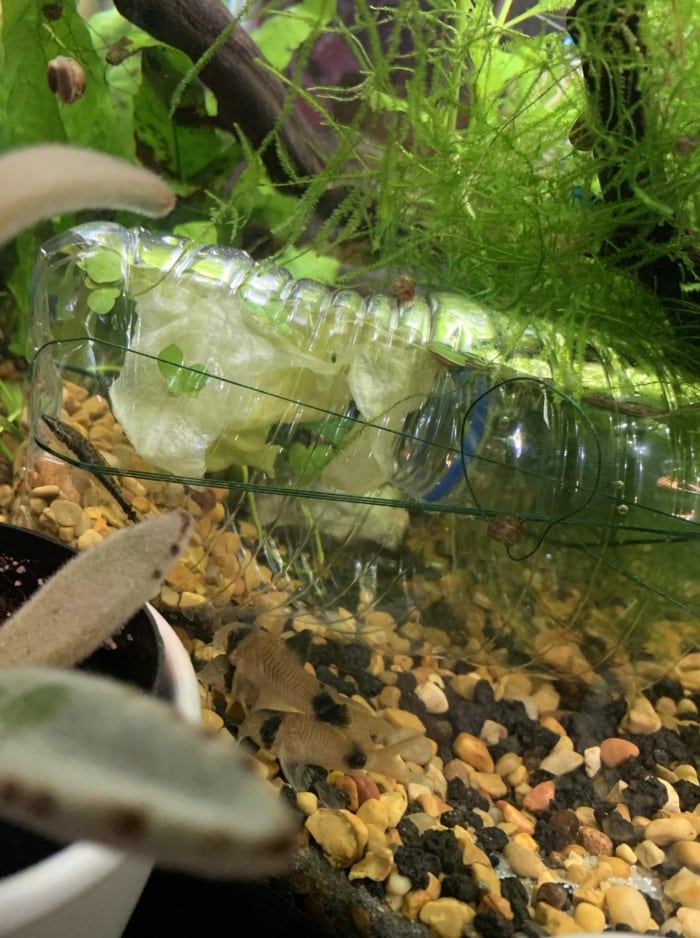
Another great way to get rid of aquarium snails is using a snail bait and trap.
In using this method, I discovered that zucchini, lettuce, and cucumber make the best bait, but that will generally depend on what’s the natural diet of your pest snails.
You can typically get a ready-made snail trap from any pet store or even online. However, I find it more practical to build my own.
Here are quick step-by-step instructions to create your own DIY snail trap:
- Take a half-liter (16 fl. Oz.) bottle, remove the cap, and cut its top.
- Put some zucchini, lettuce, or cucumber inside the cut bottle.
- Push the bottle into the tank’s substrate, turned upside-down (the “entrance” of the trap should be slightly buried).
- Leave it in your fish tank overnight.
This is best done right before nighttime when snails naturally come out of hiding. They will bunch up on the “free” food, making it easy for you to humanely remove them along with the trap.
Do this repeatedly until there are no more snails, or until their number is too low to cause concern.
By morning, the bottle will be full of small snails that you can easily remove and relocate.
Some baits that work well, aside from the veggies I mentioned above are:
- Commercial algae wafers
- Commercial snail food
- Anything designed to be eaten by aquarium shrimp
Anyhow, I’d be remiss if I didn’t mention that snails can affect a local ecosystem.
Therefore, be mindful of where you release the pesky intruders.
You don’t want them invading another body of water…
My advice: Contact animal control or animal removers for advice on the best option for the removal and relocation of these invasive species.
Add snail-eating fish species to your tank

Snail-eating fish will feed on pest snails and control their population in your fish tank.
On the surface, this looks like a no-brainer.
And while it’s a viable way to fix a snail infestation, things are a bit more complicated than that. Before introducing a predator fish for snail control, you will want to do enough research to ensure the compatibility of the new fish you bring into your aquarium matches with the ones you already have in your tank.
Some fish species that are capable of killing and eating snails may have a different temperament from the ones you have in your aquarium.
Needless to say, mixing them would be a bad idea.
Nonetheless, some snail-eating fish species include:
- Almora loach
- polka dot loach
- dwarf botia
- tiger botia
- pygmy sunfish
Although loaches will always remain great snail eaters, a hungry goldfish can do wonders too. If your aquarium setup allows for it, any of these 18 fish and invertebrates can help you get rid of the pesky snails inside.
Author’s note: It’s not uncommon for snail-eating fish to seem disinterested in eating snails at first. If you notice this, try squishing a few snails inside the fish tank, using your fingers. This may pique the interest of your predator fish and spark its appetite for the remaining snails.
Yes, squishing snails may seem unnatural and inhumane to some, so only do it if you are okay with that.
And don’t squish many at once because the fish may not be able to eat them all.
You’ll be left with an aquarium full of dead snails, which can spoil the water’s quality.
Don’t overfeed your fish

Overfeeding your fish will likely lead to leftover food in the aquarium. Most aquatic pest snails have no problem surviving off of uneaten fish food.
One way to fix the problem is to give your fish just enough food so that there is no surplus food for pest snails.
A good feeding rule is to feed your fish portions that they can finish in 3 minutes.
Watch them eat and make sure that there are no leftovers. In case there are any, remove them quickly and slightly reduce the portions next time. Underfeeding your pet fish will always be better for the whole system than overfeeding them.
Otherwise, food particles may build up in the substrate.
Alongside attracting unwanted pests like snails, food deposits can also create deadly ammonia.
Therefore, feeding your fish just enough food is a great way to deal with the issue of snails and harmful compounds at the same time.
Author’s note: Take time to figure out how much food to feed your fish. This is usually a trial-and-error process, but in the end, you can know the ideal portions pretty accurately, and this will help in snail population control Here’s a guide that may help.
Use a chemical treatment (Not the best method)

This involves using snail-killer chemicals to get rid of the unwanted invertebrates.
Once the snails are dead, you should dispose of their carcasses.
Right off the bat:
I don’t recommend this method of snail removal.
Only use it as a last resort when you have tried everything else to no success.
In any case, the best chemical for killing snails in an aquarium is copper sulfate.
While in the right dosage, it is, by and large, safe for fish, this method of treatment can be harmful to other inhabitants of a fish tank.
These include plants and invertebrates like shrimps (if you have any).
Another downside of chemical treatment is that copper tends to linger in the fish tank for weeks.
There will be traces of it even after you clean the tank several times.
This can be quite overwhelming for copper-sensitive organisms, and many of them simply won’t survive; which is why it’s a high risk method of eliminating snails.
What has caused the snail infestation in your fish tank?
Snails and their eggs often hitchhike into a fish tank on stems and leaves of new plants.
When you bring these plants home, you inevitably transfer the snail(s) into your fish tank.
Beyond that, snail eggs can also find their way into a fish container from the pet store.
This often happens if pieces of plants and substrate are scooped along with the fish and water.
No matter how diligent an aquaculture facility or pet store is, it’s just not practical and possible to identify and remove every trace of a snail, larvae, and eggs.
That’s the beauty of nature – it will always find a way; at times at your expense.
Once in the aquarium, some snail species tend to reproduce at a fast rate – more so if there’s plenty of food.
And this is what leads to a snail infestation.
When baby snails appeared in my fish tank as if from nowhere, I did some research and found that using tissue culture plants may lower the risk of an infestation.
That’s one way to control the presence and reproduction of snails in an aquarium.
How to prevent future pest snail infestations?

To keep snails out of your fish tank, always check that there’s nothing else in the bag whenever you buy new fish and aquarium plants.
Perform plant quarantine and plant disinfection before introducing the new plants into the aquarium.
Treat the live aquarium plants by soaking them before adding them to your fish tank.
You can create your very own by adding 1 cup of 3% Hydrogen Peroxide and 2 cups of water.
After your solution is done just do the following to kill any pest snails AND eggs hitchhiking on your plant:
- Soak the new plant in the solution for about 15 minutes.
- Rinse it with clean water. Tap water is fine to use.
- After the rinse, soak it in a different container with water and add a dechlorinating water conditioner. Wait for 5 minutes for the de-chlorinator to do its job.
- Add the disinfected plant to your main aquarium.
In case you want something a bit stronger, consider using one part of bleach mixed with nineteen parts of water.
In that case, soak the plant in the solution for only about 10 minutes before air drying it and eventually introducing it in your fish tank.
Unlike bleach, Hydrogen Peroxide breaks down to water and oxygen when exposed to light, so I personally prefer using it for disinfecting my new plants. For the bleach solution make sure you use gloves and even protective goggles.
Finally, some aquarists advocate dipping new live plants in saltwater solutions.
While it is true that salt will irritate aquatic snails, in my experience, it’s not potent enough to completely get rid of them and their eggs.
Here are some other ways to prevent pest snails from infesting your aquarium:
- Vacuum the substrate to clean any leftover fish food. These are later eaten by the snails which in turn helps them reproduce.
- Do not overfeed your fish.
- Soak all new plants in a Hydrogen Peroxide or a bleach solution to kill off snails as well as their eggs and larvae.
- Using tissue culture plants helps to eliminate snails.
My Final Words
If you are a longtime aquarist or are planning to be one, chances are you have either experienced or will experience a snail infestation in your aquarium.
Having a proactive approach when you first notice this pest is the first step toward proper snail management.
It’s almost inevitable.
But dealing with it doesn’t need to be hard and frustrating.
I, for one, have found that scooping snails from the tank and using traps are two of the easiest and most humane methods of dealing with these pesky pests.
A healthy aquarium is the goal of any aquarist, which is why you should stay on top of any issue that arises.

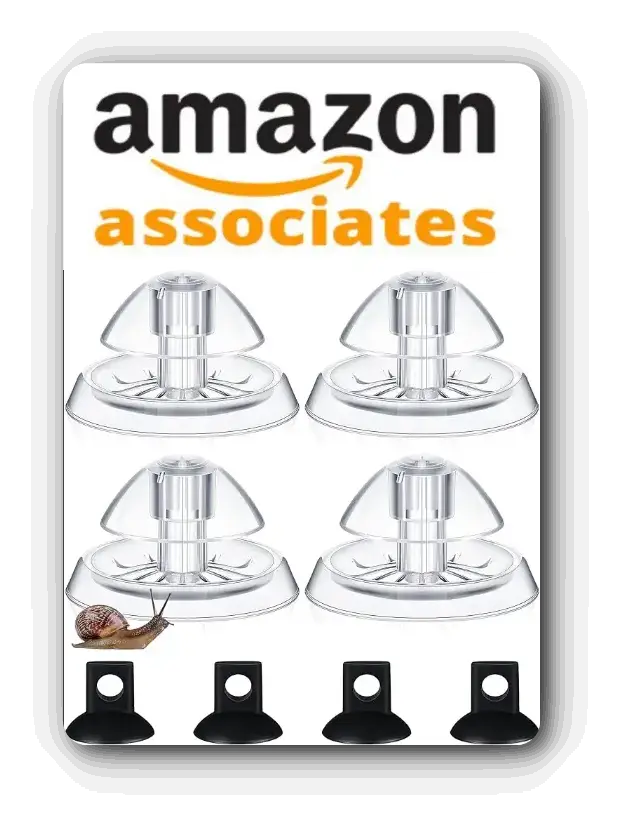
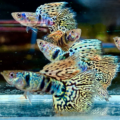


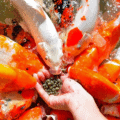



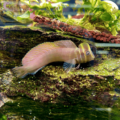
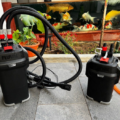
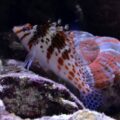
1 thought on “How to deal with a pest snail infestation in your aquarium?”